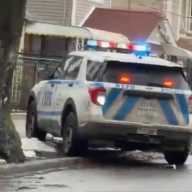Half of the estimated $26 million earmarked for Queens schools through the Fair Student Funding (FSF) initiative will be distributed within two school districts - 24 and 27 - an analysis performed by two school groups found.
The Campaign for Fiscal Equity (CFE) and the Alliance for Quality Education released their findings recently, celebrating the settlement of their 1993 lawsuit against the state for not giving equal funds to New York City school students.
“There was $1,000 difference between what a New York City kid was getting and the average in New York State,” said Helaine Doran, the Deputy Director of the CFE, explaining the basis of the suit.
In April, Governor Eliot Spitzer enacted a series of statewide education reforms and funding increases - $7 billion in annual state education aid, including $5.4 billion for the city to be phased in during a four-year period.
Information about the funding each school is scheduled to receive is available on the city's Department of Education (DOE) website, and the groups compiled the specifics for 693 city schools, which will get $110 million in total next year.
According to the figures, District 24, which includes the neighborhoods of Corona, Elmhurst, Maspeth, Glendale, Ridgewood, Maspeth, and Long Island City, will receive $7.13 million, and District 27, which includes Ozone Park, Richmond Hill, Rockaway, and Woodhaven, will get about $6.36 million.
School officials capped the amount of money to be handed out at $400,000 per school, and 27 Queens schools - 10 of which are in District 24 - will receive the maximum amount.
District 30 - the neighborhoods of northwest Queens - will rake in the third highest amount with $6.24 million.
In addition, $2.8 million will be given to District 28, $1.4 million to District 29, and $1.1 million to District 25.
Queens Academy High School, which is situated in District 79, will receive $174,161.
Several schools also got increases in their FSF funding by less than $10,000, and one school's money will be bumped up by less than $1,000. P.S. 106 in Rockaway rounded out the bottom of the list with an increase of $584 to be added this coming school year.
In comparison, District 26 will receive $784,874, which will be distributed between seven schools in Bayside, Queens Village, Flushing, Oakland Gardens, and Bellerose. Two of the schools are high schools in the area with more than 2,000 students apiece - Martin Van Buren High School and Bayside High School. Benjamin Cardozo High School, which is one of the largest in the city with more than 4,000 students, was not included on the list, so it, along with other schools not due for FSF funds will get no increases for at least two years.
Rob Caloras, the President of the Community Education Council District 26, said, “If we were not held harmless, our schools, our district would be devastated.”
The idea behind FSF is to “level the playing field,” according to statements made by Mayor Michael Bloomberg. School officials have repeatedly pointed out that funding to city schools will not be redistributed to others, but rather only new funding that comes into the area will be applied through FSF.
Still, Caloras worries that once new monies are dispersed, schools in his district - mainly in affluent neighborhoods of northeast Queens - will begin to see a decrease in funding allotted to them.
To determine the amount of money the school should be given through the FSF program, the DOE assigned a dollar value to each student. For every student, the school gets that amount of money, with more funds being given for a higher percentage of English-language learners, low-income students, and kids with disabilities. School officials hope to phase in the program over several decades.
If the program continues to be enacted, school principals will have the authority to determine where their money will go.
Caloras fears that principals, forced to choose their teachers, will opt to hire ones with less experience so that they can keep their budgets under control.
However, additional money may be available to schools through several state programs, including the “Children First Supplemental Funds” that will dole out $170 million next year.
Check out qns.com for the full list of Queens schools and the get funding increases they will receive.































